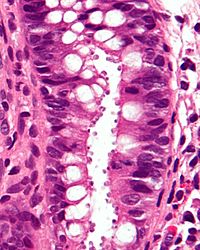
Evaluation of the BD MAX Enteric Parasite Panel for the detection of Cryptosporidium parvum/hominis, Giardia duodenalis and Entamoeba histolytica
Sign Up to like & getrecommendations! Published in 2017 at "Journal of Medical Microbiology"
DOI: 10.1099/jmm.0.000558
Abstract: Purpose. Conventional laboratory detection methods for gastrointestinal parasites are time consuming, require considerable technical expertise and may suffer from poor analytical sensitivity. This study sought to evaluate the automated BD MAX Enteric Parasite Panel (EPP)… read more here.
Keywords: detection; cryptosporidium parvum; microscopy; duodenalis ... See more keywords

A comparison of assays for the detection of Cryptosporidium parvum in the feces of scouring calves
Sign Up to like & getrecommendations! Published in 2022 at "Journal of Veterinary Diagnostic Investigation"
DOI: 10.1177/10406387211062181
Abstract: Cryptosporidium parvum is a zoonotic, protozoan parasite that causes potentially life-threatening diarrhea in the host and can be transmitted via the fecal-oral route. C. parvum can infect cattle and may be detected in their feces… read more here.
Keywords: comparison assays; parvum; cryptosporidium parvum; assays detection ... See more keywords

The prevalence, risk factors analysis and evaluation of two diagnostic techniques for the detection of Cryptosporidium infection in diarrheic sheep from Pakistan
Sign Up to like & getrecommendations! Published in 2022 at "PLoS ONE"
DOI: 10.1371/journal.pone.0269859
Abstract: Background Cryptosporidium spp. is recognized as an opportunistic zoonotic parasite that infects humans as well as wild and domestic animals. This enteric protozoan is a major cause of diarrhea in humans and animals and often… read more here.
Keywords: prevalence; detection cryptosporidium; infection; microscopy ... See more keywords